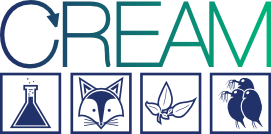Life-table experiments and elasticity analyses for linking toxicity to ecological risk
Juergen Schmidt, PhD project, Roskilde University, Denmark
Contact: Enable-Javascript@To-Read-E-mail-Address
In environmental risk assessment the frequently used endpoints are survival and reproduction to characterize the total effect of a chemical on organisms and in the further process on entire populations. The measured endpoints however disregard multiple sub lethal effects that can occur and influence the population development.
This PhD-project assumes that population growth rate is an adequate population-level endpoint for environmental risk assessment for a given population and that certain life-history traits contribute relatively differently to it, which can be determined by elasticity analysis. The project focuses particularly on the verification and applicability of elasticity analysis as a tool for use in environmental risk assessment to enhance understanding of population dynamics.
Life table response experiments to examine the responses of organisms, with different life-histories, to stressors will be used to derive information that can be implemented in matrix models to calculate population growth rate. Elasticity analysis will identify the relative importance of the life-history traits contributing to it. That in turn will be tested and evaluated in further experiments to confirm the applicability of the concept for use in ecotoxicological testing.
Supervisor: Valery Forbes (RUC)
Co-supervisor: Ryszard Laskowski (UJAG)
Associated partners: ANSES; Bayer; BASF; KEMI

